Discover 6 hidden attractions, cool sights, and unusual things to do in Wenham (United States). Don't miss out on these must-see attractions: Wenham Museum, Claflin–Richards House, and Larch Farm. Also, be sure to include Solomon Kimball House in your itinerary.
Below, you can find the list of the most amazing places you should visit in Wenham (Massachusetts).
Table of Contents
Wenham Museum
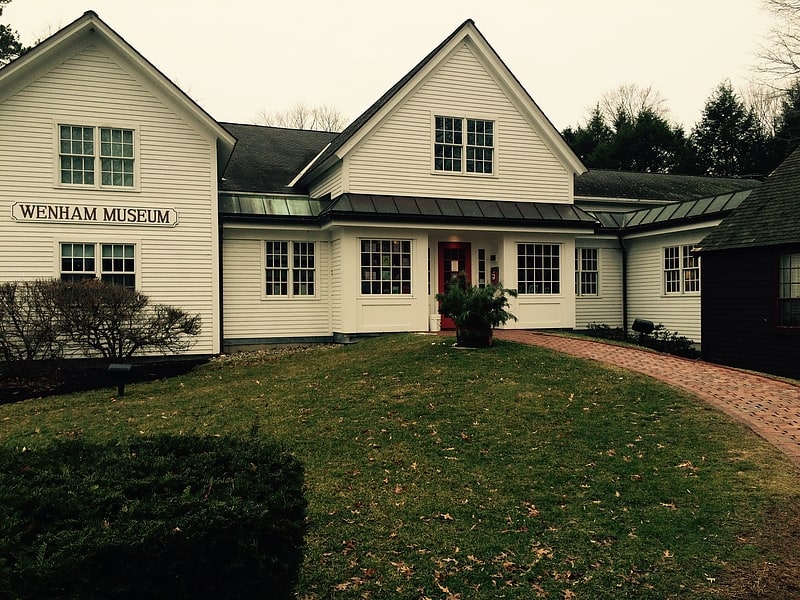
Museum in Wenham, Massachusetts. The Wenham Museum is a museum in Wenham, Massachusetts, United States.
The museum is a non-profit organization that was established in 1922 and currently has a collection estimated at 45,000 objects, which includes textiles, toys, photographs, archival documents, children's books, and objects related to domestic life dating from the 17th century to the present. The museum also owns, preserves, and interprets the Claflin-Gerrish-Richards House, a 17th-century colonial house to which the main museum building has been added. The museum is best known for its collection of over 5000 antique dolls, and eleven permanent, electric model train dioramas. Known for being a hands-on history museum, its main visitor demographic is families with children age 8 and younger. It is a participating member of the Association of Children's Museums and is accredited by the American Alliance of Museums (AAM).
Traditionally the museum runs several family-oriented community events throughout the year, including semi-annual artisan fairs, antique and collectibles sales, and community art projects. The museum also hosts public and private school students who participate in a hands-on Colonial Life Field Trip Program which focuses on typical chores and tasks that would have been required of children during the colonial era in what is now Massachusetts.
As of September 2020, many of the usual events and activities in the museum have been limited or canceled due to the continuing restrictions made necessary by the COVID-19 pandemic, but there are plans in place to return to normal activities as soon as it is possible to do so.[1]
Address: 132 Main St, 01984-1520 Wenham (Wenham)
Claflin–Richards House
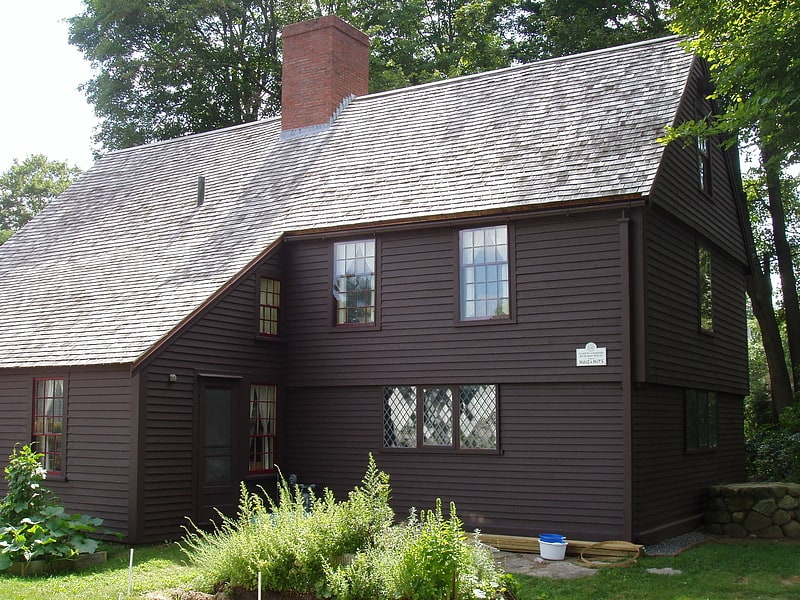
Museum in Wenham, Massachusetts. The Claflin–Richards House, also known as the Claflin–Gerrish–Richards House, is a historic First Period house located at 132 Main Street, Wenham, Massachusetts. It is now part of the nonprofit Wenham Museum and may be toured by appointment.
The Claflin–Richards House was constructed circa 1690 with ogee braces, an architectural hallmark of 16th- and 17th-century English dwellings. Today it contains three centuries of architecture, furnishings, and artifacts, representing a First Period dwelling room, a late 17th-century minister's parlor, a circa 1750 bed chamber, and a Victorian-era chamber. Furnishings include a woolen bed-rug made in 1724, said to be the second oldest such rug in the United States, and an oak dresser built in 1752. It was purchased by the Wenham Historic Society in 1921.
The house was listed on the National Register of Historic Places in 1973, and included in the Wenham Historic District in that year.[2]
Larch Farm
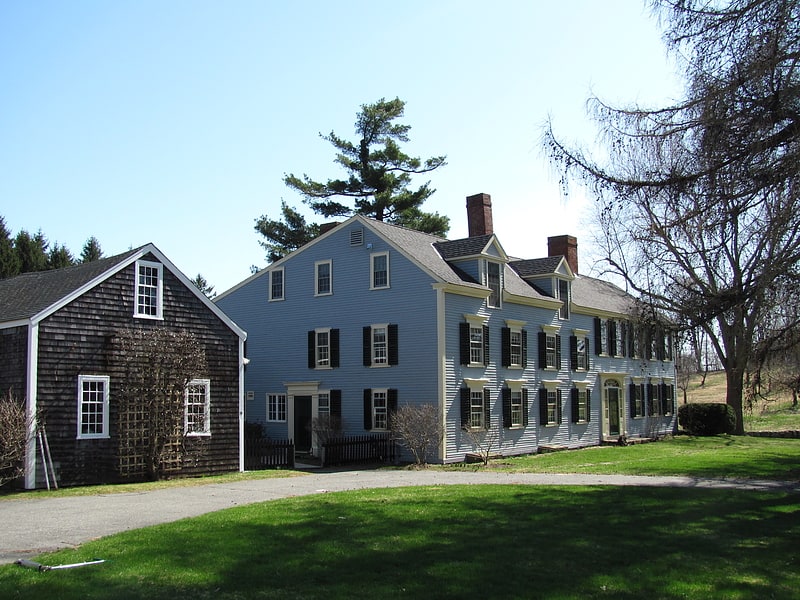
Building in Wenham, Massachusetts. The Larch Farm, also known as the Goldsmith-Pickering House, is a historic First Period farmhouse in Wenham, Massachusetts. The house is a large colonial 2+1⁄2-story wood-frame house, eight bays wide. The northern half of the house is three bays deep, and the southern half is two deep. Its complicated construction history begins in 1700, when Zaccheus Goldsmith was given permission to take timber for the purpose of building a house 40 feet wide and 20 feet deep. This structure was two stories high, with a leanto section in the rear and a chimney on its right. An addition during the Georgian period removed that chimney and doubled the size of the house, and moved the front door to the north side. A wing was added on the south during the 1780s, and the exterior was remodeled later to give the house a Federal style appearance. The interior of the house includes surviving decorative features from all three periods of construction.
The house is also notable for its purchase in 1806 by Timothy Pickering, a former United States Secretary of State. Pickering transformed the Goldsmith property into a rural country estate, planting linden and larch trees on the grounds. The house was listed on the National Register of Historic Places in 1990.[3]
Solomon Kimball House

The Solomon Kimball House, probably built in 1696, is a historic First Period house in Wenham, Massachusetts. Although named for nineteenth- and early twentieth-century owner Solomon Kimball, the house was built by Thomas and Mary Kilham—he the veteran of a pivotal battle in King Philip’s War and she the sister and aunt of defendants in the Salem Witchcraft Trials.
Eighteenth-century owners included Speaker of the Massachusetts House of Deputies William Fairfield, and American Revolutionary War veteran Capt. Matthew Fairfield.
The house was added to the National Register of Historic Places in 1990.[4]
James Friend House
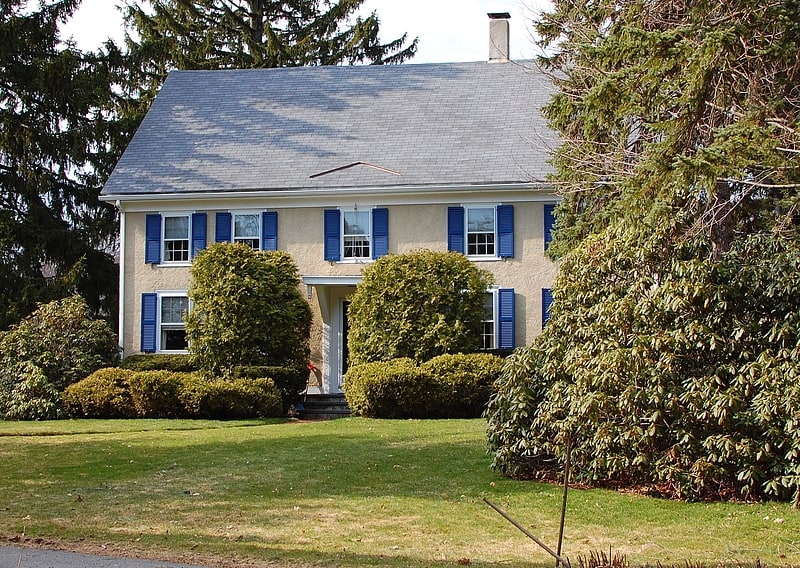
The James Friend House is a historic First Period house in Wenham, Massachusetts, United States. It was built by James Friend, a local carpenter, probably not long after he received a grant in 1699 to cut timber on public land. The house is a 2.5-story wood-frame house with a center chimney. Its main facade is a slightly asymmetrical five bays wide, even though it was apparently originally built to that plan rather than in stages. A lean-to was added to the back of the house sometime before 1738, giving the house a saltbox appearance. This section was raised to a full two stories in the 19th century, and the roof was rebuilt. In the early 20th century, the house was moved back from the road and covered in stucco.
The house was listed on the National Register of Historic Places in 1990.[5]
Newman-Fiske-Dodge House
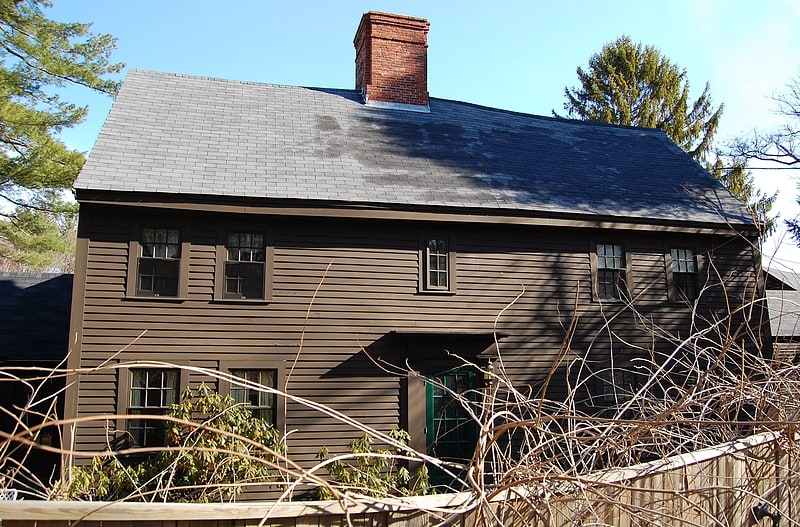
Historical landmark in Wenham, Massachusetts. The Newman-Fiske-Dodge House is a historic First Period house in Wenham, Massachusetts. The house contains a rare instance of preserved 17th century decoration. Like many First Period houses, it was built in stages. The first part, the now-central chimney and right-side two stories, was built c. 1658, with the left-side rooms being added c. 1695–96. The fireplace in the right-side room contains original detailing that was covered over by paneling sometime in the 18th century, and the trim on the staircase to the second floor was probably added at the time of the addition.
There have been several later additions to the house. A leanto section was added to the rear in the 18th century, and single story wings were added to either side in the 19th century. The interior was also partially redecorated in the 19th century, giving the left side front room some Greek Revival character. In the early 20th century the house underwent a major restoration, in which the left side front room was opened up to the leanto section, creating a large living space.
The first documented owner of the house (and for whom it may have been built) was the Rev. Antipas Newman, who married Elizabeth, the daughter of John Winthrop the Younger. The modifications in the 1690s were probably made by William Fiske, Jr.
The property was listed on the National Register of Historic Places in 1990. It also includes a barn which may be of 18th century origin.[6]